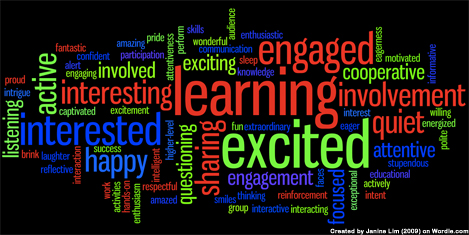Lit Review: This is a post in a series focusing on the research studies on videoconferencing.
Fiege, K. H. M. (2005). Educational researchers using real-time videoconferencing to collaborate: Thoughts and feelings shared. Retrieved from ProQuest Digital Dissertation. (AAT MR09088)
Summary / Interesting Points
This qualitative study consists of an interview with 17 participants who collaborated using high-bandwidth videoconferencing. The participants were asked about their definitions of real-time collaboration and videoconferencing, how much value they placed on collaboration, their thoughts on the strengths and weaknesses of videoconferencing, if they would use this medium in the future, and if they thought information was effectively shared via videoconference. In addition, they were asked about ways to improve collaboration in a VC, how often they used VC to collaborate, and what they thought was the most misunderstood concept about VC. They were asked to describe their ideal VC/collaboration system, if VC changed how they collaborated, and what their ideal method of collaboration would be. Side comment. This study seems to be a great model for writing good interview questions!
The detail of the responses from the participants was very interesting and intriguing to read. I could see some of those same issues in my work, and in other cases where we use it soooo often, the issues raised are hardly a barrier. A few of the participants in the study clearly did not have a good experience and thought it could be used best by shutting it off! Others had more experience and understanding of what could be done and how to set up meetings effectively, and they had much more positive things to say. The study is full of good suggestions for an “ideal” system which would be highly useful to vendors developing their systems.
One of the participants said that videoconferencing forces you to plan more and therefore have a better meeting. It’s “quicker, shorter” and you get “down to business quicker” and less distracted. Have you noticed this too? One board in MI meets via videoconference for two hours a month, another one meets all day face to face. Hmm! Some of the responses were funny – including in a videoconference you can mute the audio for someone that annoys you, or say you have a phone call and run out of the room and vent about the person who is annoying you. However, this brings to light the importance of planned careful conflict resolution!
Checklist
The really useful results from this study are the “pedagogically-based strategies” an educational researcher could use in using VC. These are direct quotes from Appendix B (p. 102-103):
Before the videoconference meeting
- State purpose of collaborative meeting
- Determine if videoconferencing is the appropriate medium
- List all attendees
- State location of all sites
- Determine what equipment is available
- Determine codecs at all sites
- Determine collaborative tools being used
- Determine who the tech is a each site – name & contact info
- Create an agenda
- Disseminate agenda to attendees
- Test ahead of time – mics, cameras, lighting, audio, connection
- Disseminate and discuss videoconferencing etiquette with all attendees
- Ensure appropriate lighting is in place
- Provide materials to attendees ahead of time
- Ensure a level of comfort with the technologies being used
- Provide an opportunity for attendees to familiarize themselves with the VC technologies
During the videoconference meeting
- Arrive at least 15 minutes early to the meeting
- Introduce or have introductions of all attendees
- Make initial eye contact with all attendees
- Point out all the features of the videoconference system to the attendees
- Review the back-up plan in case of technical difficulties
- Review proper etiquette (talk to camera, use microphones, avoid sudden movement and noises, speak naturally, be conscious of body language, posture, and facial expressions)
- Be prepared to stay for the entire duration of the meeting
- Ensure that all attendees’ electronic devices are turned off
- Review where facilities, phones and fire exits are at local and remote sites
- Talk to the cameras
- If appropriate: Establish a steering committee, Address technology literacy and troubleshooting techniques, Set objectives, vision, goals and/or outcomes for collaboration, Review positive outcomes of previous meeting, Discuss rewards and consequences for collaborative efforts
After the videoconference meeting
- Discuss and agree upon a follow-up procedure with all attendees
- Thank all attendees for their participation
- Ensure that the system is disconnected from the remote sites
- Turn of all appropriate monitors and peripherals
- Follow up the meeting with all attendees via asynchronous or synchronous communications
- Ensure that the contact person knows when the meeting is complete
- Ensure room/area is secure before leaving
Comments
Interesting definitions: DVC – desktop videoconferencing, and IVC – integrated videoconferencing. I bet you usually think of that “I” as representing “interaction”, not “integrated”. Have any of you heard that use before?
Besides reminding our (very comfy with VC) selves what the challenges are for newbies when using VC, this study has very interesting comments and issues raised by the participants. The wide variety of perpsectives certainly are a strength to the study.
The most useful part is the suggestions for the meetings. What do you think of this list? How is YOUR committee meeting via VC doing at these best practices? I can see a couple meetings I attend that do fairly well, but noticed some places for improvement as well.
Question for you!
Do you think anything is missing from the list? What would you add?


